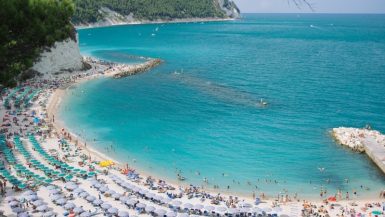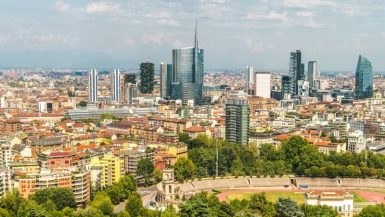
Italy with its long Mediterranean coastline, iconic cities, beloved cuisine, and ancient history is one of Europe’s most popular holiday hotspots. Sure, Rome, Venice, and the Amalfi Coast are once-in-a-lifetime travel destinations, but they’re also some of the most visited places in the world and Italy has a lot more to offer than long queues and crowded beaches.
The birthplace of pizza and pasta is the fifth most-visited country on the planet, but this means no holiday to the boot is complete without inflated prices and hundreds of other tourists with the same plans as you. That said, Italy is still peppered with off-the-beaten-track towns where you can find authentic experiences, picturesque landscapes, and, not to mention, fewer crowds.
Swap Amalfi for Umbria and you’re in business. Our guide looks at some of the least visited places in the country so you can get a taste of secret Italy. Let’s get into it.
Pitigliano, Tuscany

Located in the Maremma at the southern tip of golden Tuscany, Pitigliano is a small hilltop village, rich in history and culture and carved entirely out of volcanic rock. Bronze Age, Neolithic, and Copper Age settlers have all left their mark on the ancient town, but its best known by its local nickname, “Little Jerusalem”, because of its historic Jewish community.
Pitigliano is around 80 kilometers southeast of the city of Grosseto, but just two hours by car from Rome, hence the town was used as a safe place for fleeing Jews escaping the capital. By the end of the fifteenth century, the Jewish community started to thrive in Pitigliano, and exiles from all over the country used the high tufo ridge as a place of refuge.
Jews made up a quarter of Pitilgiano’s population in what was known as their golden period. Unfortunately, Italy’s Fascist regime saw anti-Semitic laws that diminished populations, and the community has since dissolved. Nevertheless, the mark of their culture is still felt in the streets of Pitigliano.
Although there are thought to be just four or five Jewish residents living in Pitigliano today, visitors can still tour the synagogue, built in 1598 but restored in 1995, as well as the cultural center, Jewish library, Kosher butcher, ritual bathhouse, wine cellar, and bakery that are all dug into the tufa stone.
You can also check out the Etruscan hollow ways and necropolis, a fortified palace, and the original village aqueduct while you get lost in Pitigliano’s cobbled streets and winding alleys.
Burano, Veneto
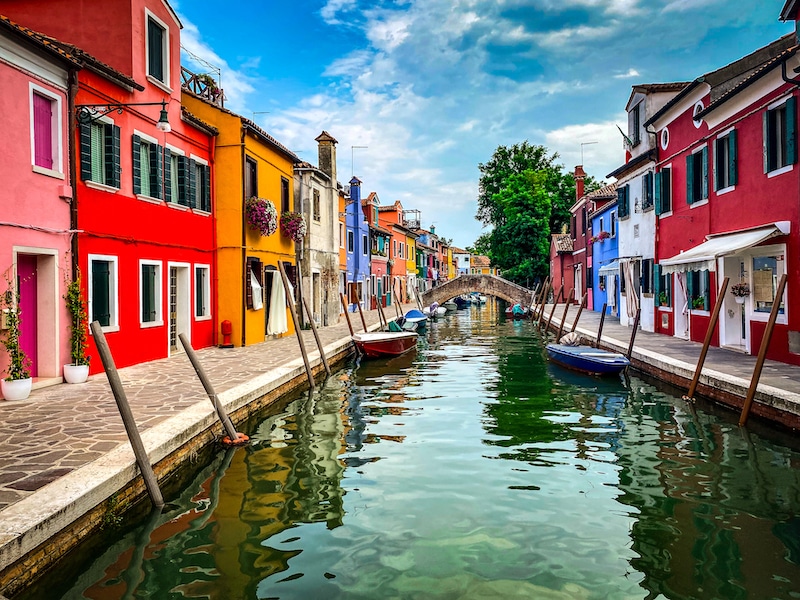
Venice is emblematic of Italy. The floating city in the northeast is built on more than 100 small islands, separated by canals and scattered with crumbling bridges, winding alleyways, and quaint squares. From the gondola rides to the marked cuisine and the carnival celebrations, there are tons of reasons to visit Venice, but it’s also one of the most popular cities in the country and it’s always overrun by tourists.
However, if you’re after the Venetian experience without the saturated tourist buzz, step over to Burano, a small island in the Venetian lagoon but a world apart from Venice. The island is best known for its artists and lace makers, as well as the colorful buildings that line the canals, but it’s still much quieter than nearby Venice, and at night, the streets are virtually deserted.
Outside the charming lace shops dotted all around, women embroider everything from wall hangings to wedding dresses and Burano is a real rainbow of colors. The seafood is also fantastic in this seaside town and generally much cheaper than in Venice. Take a boat ride without the inflated gondola prices and tour the lace museum, and stick around for when the day-tripper leaves to experience a silent night on Venice’s secret island.
Prosecco Road, Friuli Venezia Giulia

Located two hours north of Venice and just 30 minutes from Trieste, between the contrasting towns of Conegliano and Valdobbiadene, sprawls one of Italy’s un-sung highlights and tourist-free regions, namely La Strada del Prosecco, or the Prosecco Road.
The Prosecco Road winds through more than three dozen vineyards, most family-owned holdings, where bucket loads of Italy’s best-known sparkling wine are churned out. Unlike Champagne, Prosecco is a grape and so can be made elsewhere on the peninsula, but none can compete with the Fruili Venezia Giulia and Veneto versions.
Driving through the narrow roadways that hug the edge of steep cliffs is a joy in itself, but there are also plenty of towns worth visiting in the Prosecco region. Conegliano with its stucco buildings and the 10th-century castle is a good place to start, as well as Valdobbiadene for its neoclassical buildings and rickety hillside houses. There’s also San Pietro Barboza, where you’ll find quirky rock statues, and Santo Stefano, a hilly medieval town. In between these two villages are the steep slopes of Le Cartizze, where the designated vineyards of Prosecco Superiore, which can only be worked by hand, thrive in their own micro-climate.
Civita di Bagnoregio, Viterbo

Visually, geographically, and historically outstanding, Civita di Bagnoregio might be known as the “dying town” but it’s very much alive. Located in Viterbo, in central Italy, Civita di Bagnerogia has escaped modern influence and mass tourism, mostly thanks to its unique topography. It looks hewn from the rock it sits atop and you have to traverse an elevated pedestrian walkway to reach the city center, but this only adds to the fairytale nature of this hilltop village.
The history of the town goes back more than 2,500 years. The Porta Santa Maria gateway, an ancient city gate that still stands at the entrance to Civita di Bagnoregio, was built by the Etruscans, as was the Grotta di San Bonaventura, an ancient tomb-come-chapel. The Romanesque San Donato Church in the main square dates back to the 7th century.
Civita is a town under threat since the hill on which it rests is slowly eroding. Most residents have already left, with only around 10 remaining, and the town itself and all its buildings will eventually tumble down into the Bagnoregio Valley. Still, that’s all the more reason to get there while you can.
You’ll feel the history of Civita in the smooth cobblestones underfoot, and in place of conventional tourism are traces of Middle Age village life. Crumbling Renaissance ruins, ancient wooden doors leading nowhere, arches draped in ivy and potted geraniums parading over balconies, there’s even a pre-Roman tunnel beneath the town that was used as a bomb shelter in World War II.
There are a few hotels, restaurants, a piazza, two gardens, and a museum, and thanks to social media, the village has become more popular for day trips in recent years. Still, visit in the afternoon during the low season and there’s a good chance you’ll have Civita all to yourself.
Matera, Basilicata

Matera is one of Italy’s overlooked towns that you probably have seen before, but it’s still full of eerily quiet alleyways and dozens of abandoned buildings with its impressive size and isolated position. The now-romantic cave dwellings that are symbolic of Basilicata hide a story of Italy’s poverty-stricken past, and this UNESCO city was actually entirely abandoned between the 1950s and 1980s due to the inhumane living conditions and squalor associated with its slums.
You might recognize Matera as one of the most striking filming locations from No Time to Die, the 2021 James Bond blockbuster. While Matera’s 15 minutes of fame has unsurprisingly drawn the crowds, it’s not hard to find moments of peace, especially in the Sassi, the unique cave-dwelling districts of Matera. The Sassi complex was inhabited for 9,000 years before it became known as “the shame of Italy”. This area is impressively vast and still largely uninhabitable, meaning you can explore many of the remote lanes and stairways in complete solitude.
As well as houses, there are old churches and underground meeting places carved into the limestone of the ancient river canyon. You’ll also find shops, cafes, restaurants, and hotels surrounding the Piazza del Sedile, the main city square. Matera is slow paced and with so many stairs and dilapidated sites, you’re forced to take your time to explore.
Asolo, Veneto

Dubbed “the pearl of Treviso” as well as “the city of a hundred horizons”, Asolo is a small, leafy village in the rich wine area offering stunning panoramas of Italy’s greenest lands. Asolo means “breath of wind” in Italian and the picturesque town is more than a few thousand years old. With cypress-covered hills where villas and ancient walls wind up towards the 12th-century fortress, Asolo well preserves its history.
Asolo has drawn artists, writers, and poets over the years, earning its nickname from Giosué Carducci, the Italian-born poet who was enchanted by Asolo’s vistas. Nevertheless, despite its handful of popular attractions and close proximity to Treviso airport, it’s still largely untouched by arcade tourism. A strategic lookout for Romans, a summer retreat for Venetians, and later a rustic getaway for European tourists, Asolo is underrated in the 21st century.
The town is still rich and boutique stores line its streets. Asolo is a lifestyle town and its pretty streets and faded frescoes speak for themself. The mountain-top fortress is something from a fairytale and on a clear day, visitors can see Venice from the old castle rampart.
Asolo is often named one of Italy’s prettiest villages but it is still authentic and you’ll likely only find locals wandering its medieval streets in the low season.
Spello, Umbria

When heading to Umbria, tourists often flock to places like Assisi, the birthplace of St. Francis and the home of a monumental two-story church, consecrated in the 13th century. Beautiful scenery, amazing architecture, and rich culture are all synonymous with the steep Perugia town, but the same can be said for the rest of Umbria and you won’t regret exploring some of its less-trodden settlements.
Nestled at the southern foothills of Mount Subasio, Spello is a historic village and comune, most recognizable for its verdant medieval streets where green plants clamber the walls of old buildings and colorful flowers burst out of hanging plant pots and over balconies. In fact, the city plays host to an important event, all about the flora, called Infiorate di Spello, where 15 million flowers from 65 different species carpet the city.
Infiorate happens in June on the Catholic Feast of Corpus Domini where locals create spectacular murals out of the flowers, working all night long, for the local bishop and his procession to parade across in the morning. The city is popular during the festival, but uncrowded for the rest of the year and equally green and fragrant.
Spello is located between Assisi and Foligno, and its medieval pink-stoned houses and fortified center with several fascinating churches offer something of small-town Umbria for everyone.
Montemerano, Tuscany
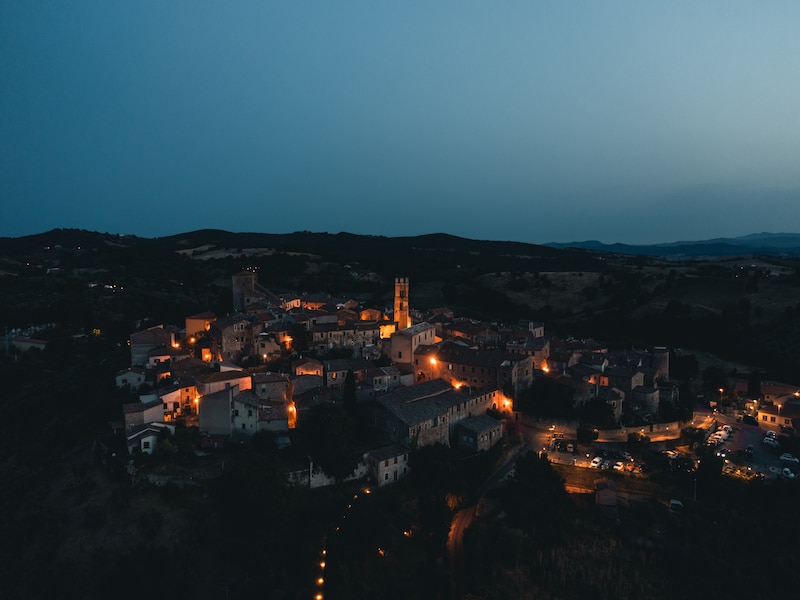
Another Maremma gem, Montemerano is a quintessential Tuscan town without the influences of mainstream tourism that you’ll find in places like Siena. There are only around 500 residents and Montemerano perfectly balances medieval history with the Tuscan wilderness that sits on the other side of the ancient city walls.
You probably haven’t heard of this 12th-century village, but you might have heard of the nearby Saturnia hot springs, one of Tuscany’s most popular attractions. Usually visited on day trips, tourists tend to skip Montemerano, but you can make it a round trip and beat the hot spring crowds if you visit in fall or winter.
Montemerano’s heart-shaped historic center is dotted with picturesque squares and great restaurants. In fact, it’s one of the best places to savor the local specialty of Tortelli, a Tuscan parcel pasta filled with ricotta and herbs and served with rich ragú sauce. The aromas of rosemary, sage, basil, and Tortelli fill the streets of Montemerano, and where better to try the local delicacy than at Da Caino, a Michelin-star restaurant?
The 50-year-old establishment is headed by the acclaimed Tuscan chef, Valeria Piccini, but despite the pull of the restaurant, Montemerano is always uncrowded.
Bolsena, Lazio
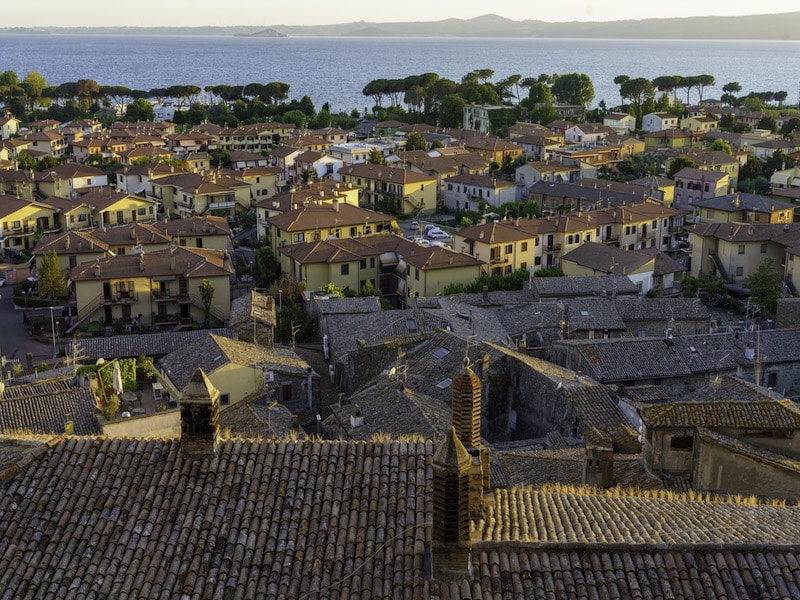
Who says you can’t have beaches without crowds? Bolsena might not be a coastal town, but it’s the perfect place to take a dip with the deep crystalline waters of Lago di Bolsena on your doorstep.
Bolsena is a small city that displays its Etruscan roots at every turn. The well-preserved medieval center is dotted with old churches, pillars, doors, and squares. There’s also the 13th-century Basilica of Saint Christina, tied to a Eucharistic Miracle, and the Castello Rocca Monaldeschi, built by the Orvietans in the same era.
The castle is almost as emblematic of Bolsena as the lake, with four towers that loom over the town. Climbing the spiral staircase to the ramparts for views over Bolsena and the lake is a true highlight of any trip.
What’s more, Bolsena is the largest volcanic lake in Europe. After the Vulsini volcano erupted around 370,000 years ago, the surface crust collapsed forming a caldera that slowly filled with rain over tens of thousands of years, forming Lake Bolsena. As a result, the volcanic shoreline that flanks the lake is dotted with black sand beaches. With the lake’s 43-kilometer circumference, most of the beaches are rarely crowded but always magical.
Bolsena is nestled between Tuscany and Rome and makes the perfect stop-off on an Italian road trip for a summer retreat. Bolsena is a town steeped in miracles and mystery, and a secret worth keeping.
What month is best to visit Italy to avoid crowds?
With its lusted Mediterranean climate and coastline, Italy is brimming with summer resorts and June and July can be some of the busiest times to visit. A number of cities are always popular, like the bustling capital of Rome and the fascinating floating Venice, but you can usually avoid the crowds by visiting Italy’s towns and resorts in late autumn, winter, and early spring.
What is the most visited region in Italy?
The sprawling northeastern region of Veneto, stretching from the Dolomites to the Adriatic, is Italy’s most visited place with nearly 18 million foreign and domestic tourists heading there every year. Still, it’s not just its geographic diversity that draws the crowds. The regional capital, Venice, is one of the most famous cities in the world with its maze of canals, Gothic architecture, and carnival celebrations. Close to Alpine Lake Garda, you’ll also find the charming medieval town of Verona, the famous setting of Shakespeare’s “Romeo & Juliet”.

